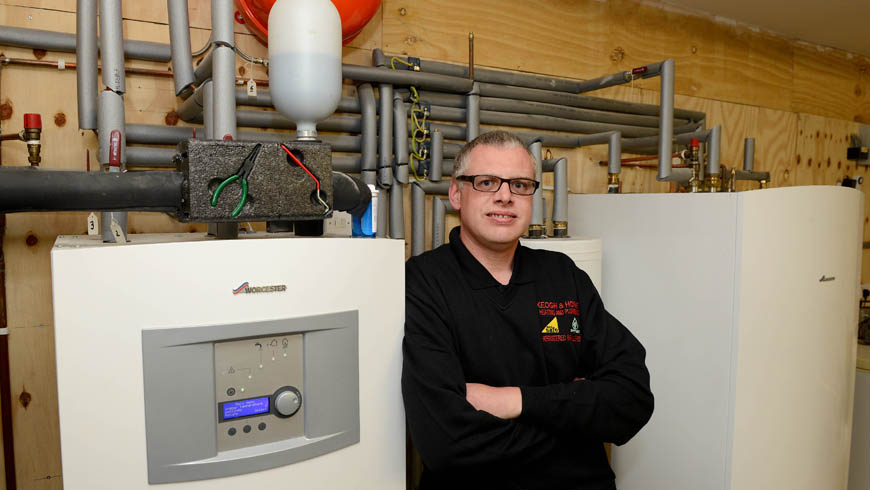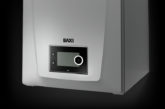
Prior to the launch of the domestic Renewable Heat Incentive (RHI), the heat pump market seemed to be one that was struggling to fulfil its potential. Six months on from the launch, Martyn Bridges, Director of Marketing and Technical Support at Worcester, Bosch Group offers a reminder of some of the key considerations that need to be made prior to a heat pump installation, to encourage uptake amongst installers and homeowners.
Since the launch of the domestic RHI, the industry has not seen a major increase in demand for heat pumps but perhaps it’s time that installers start to consider this technology more frequently when conducting a survey of a customer’s house. Undoubtedly, heat pumps aren’t what many homeowners would consider to be a typical heating system, but it’s important for installers to understand how they can educate their customers on the best installation arrangements and the ways in which they can benefit from the technology in the long term.
As with the installation of any new heating and hot water appliance, each installation should be considered on its own merits, as a ‘one size fits all’ approach simply does not work, particularly with heat pumps. Installers should consider each property for its own characteristics and challenges. For example, when it comes to heat pumps in particular, the structure and insulation levels of the property itself are key to the ongoing efficiency of the system, as heat losses need to be accounted for, and minimised where possible. It goes without saying that with a number of technologies available on the heat pump market, selecting the right type is also vital in ensuring that the end user can benefit from the best possible return on investment.
The ideal situation for maximum return from a heat pump is in a new or newly renovated building that is up to current Building Regulations. It is still possible and practical to install a heat pump into an older property but this often needs to be coupled by a comprehensive upgrade to the insulation throughout the entire property, to maximise efficiency. The installer should check the property is as airtight as possible and make suggestions on how to improve the insulation if it falls short of the latest Building Regulations.
With sufficient insulation in place, it is important to evaluate the existing heating system – in particular the size of the radiators. A thorough heat loss calculation on the house with the new insulation in place would be recommended, to see whether the existing radiators can provide the room temperatures required from the lower flow temperatures that will be delivered from the heat pump.
In the event that the radiators are not large enough, it will be necessary to increase the physical size of the radiators, to maintain a comfortable environment at these lower level temperatures. This could mean replacing single panel radiators with double panel equivalents, which will also reduce the likelihood that additional pipework will be needed. Being mindful of each of these considerations will ensure that the customer has a detailed understanding of how a heat pump can enhance the way they heat their home, and that the installer is prepared from the very beginning on every step of the installation process.
In order to heat a radiator or underfloor heating system from a heat pump, there are essentially two choices of heat pump; either air to water or ground to water.
The most common heat pump installation involves an air to water type. In this arrangement, an outside unit is used to collect a constant volume of air via a suction fan and apply the heat energy from the air to a refrigerant circuit that is then compressed to a high temperature. This heat is then transferred into the primary water circuit of the heating system. Therefore, the external unit is generally sited fairly closely to the property and a major consideration should be the inevitable noise from the fan and whether this is suitable for the property in question.
Ground source heat pumps are designed to collect natural energy stored in the ground and convert it into a usable, sustainable source of heating and hot water for the home – usually without the need for an additional boiler. It is often argued that for 12 months of a the year, a ground source heat pump is likely to be more efficient than an air source heat pump, simply because the temperature in the ground is more consistent than the temperature in the air.
A heat pump is a good option for many properties all year round, providing they are well insulated and the heat emitters are appropriately sized for the reduced flow temperature at which the technology operates. In properties where the insulation levels are not as strong, a boiler and heat pump combination could be considered. Given the nature of the UK’s gas infrastructure, a hybrid arrangement is likely to be the most appropriate next step for us to take as we work towards significantly lowering emissions.
Hybrid systems work by incorporating an element of renewable technology alongside a gas or oil-fired boiler, providing a simple move towards a greener fuel source. Heat pumps are a popular hybrid solution as they utilise constant energy available in the air or ground and manufacturers such as Worcester have been investing in technology to give the hybrid market the needed boost, offering versatile and effective options.
It would be great to see manufacturers, installers and policy makers collaborating to deliver hybrid solutions and raising awareness of how heat pump technology can work alongside gas or oil-fired boilers. With a stronger installer support system in place, awareness of hybrid systems and the benefits of heat pumps will rise and there should be a demand as the gap between renewable and traditional heating products is gradually bridged.













